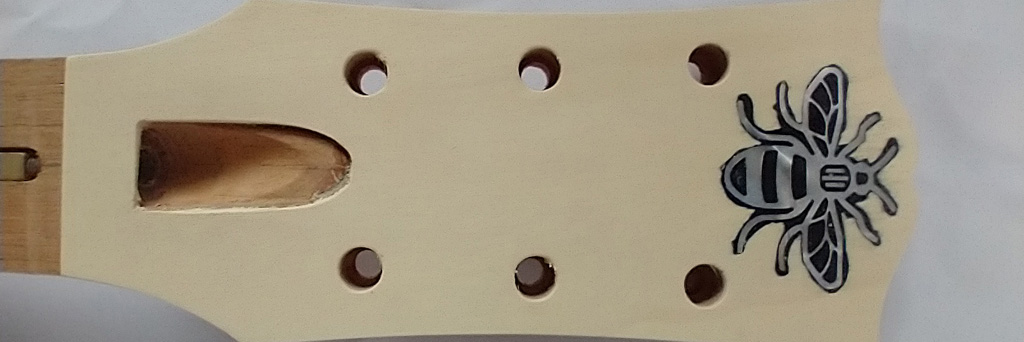
Removing a Gibson Corian Nut
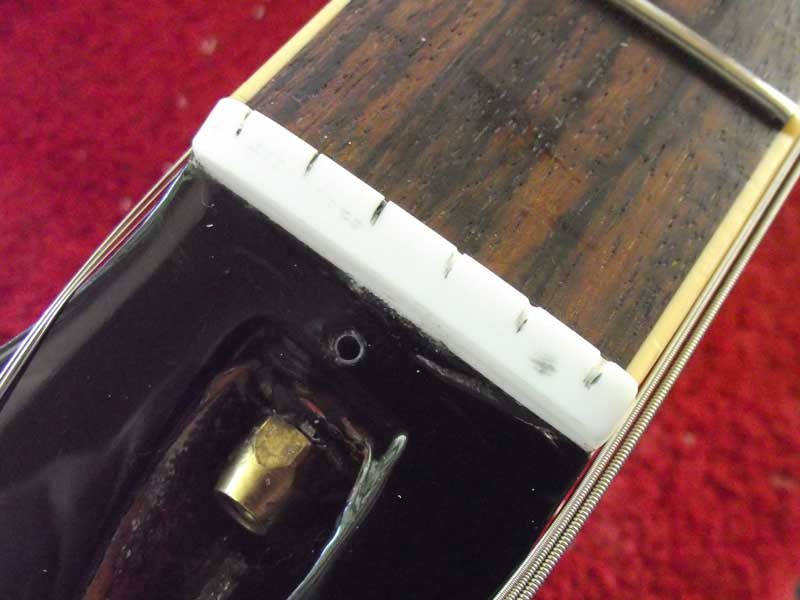
A regular customer of mine recently bought a 2006 Les Paul and brought it to me for a setup. As soon as I straightened the neck, which had been somewhat bowed, I realised that the 1st string was buzzing against the first fret as the nut had been cut too low. I suspect that the relief had been introduced into the neck to mask this. Anyway. there was no choice but to fit a new nut.
Recent Gibson Les Paul guitars are fitted with Corian nuts. Leaving aside what a poor nut material Corian is (too sticky) for some reason Gibson are using a lot of glue to hold them into the slot. You can even see the excess glue that’s spilled onto the headstock face in the picture below.
Removing the nut is a delicate process – it’s not a matter of just scoring around the edge and taping it out as with the old Gibson nuts.
After scoring around the nut with a sharp blade, I used a hacksaw to cut almost through the nut across its width.
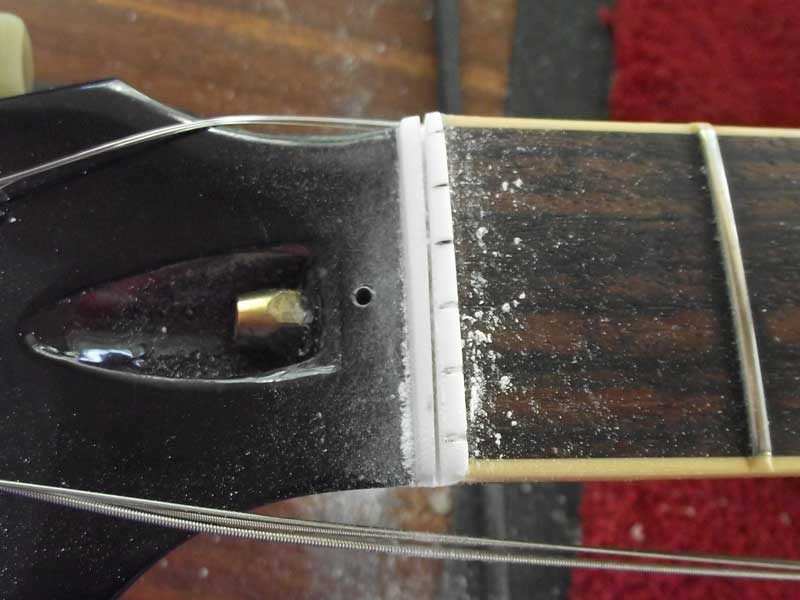
Next I squeezed the two halves together with pliers. The front face of the nut broke off in several pieces.
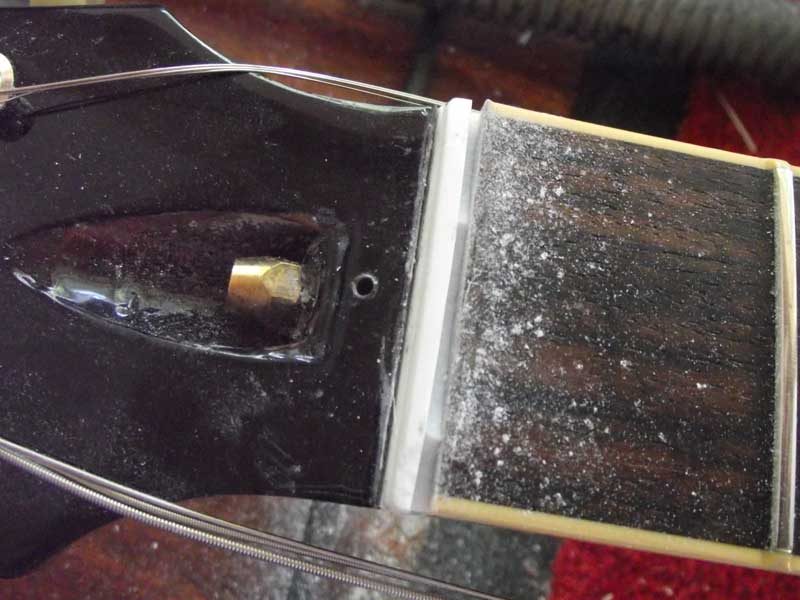
I was now able to tap the rear of the nut forwards to break its adhesion and lift it out.

Now I could get a blade down between the fretboard and the remaining part of the nut and remove it. You can see that a few wood fibres were stuck to the nut.
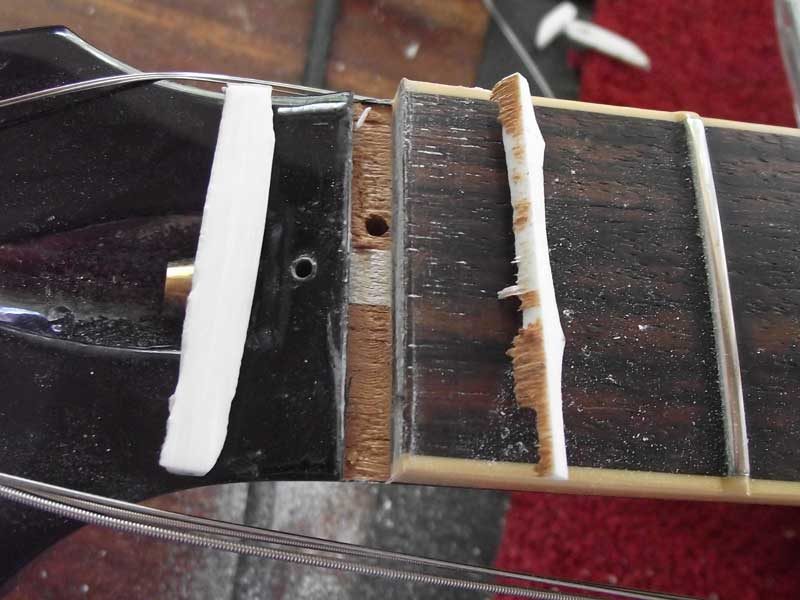
Next I cleaned up the base of the nut slot with a special file to make a level seat for the new nut, sized a nut blank and fitted it to the slot.
The string slots were marked out using the Stewmac String Spacing Rule.
Once the nut slots were nearly there, I glued in the new nut with just two dabs of superglue.
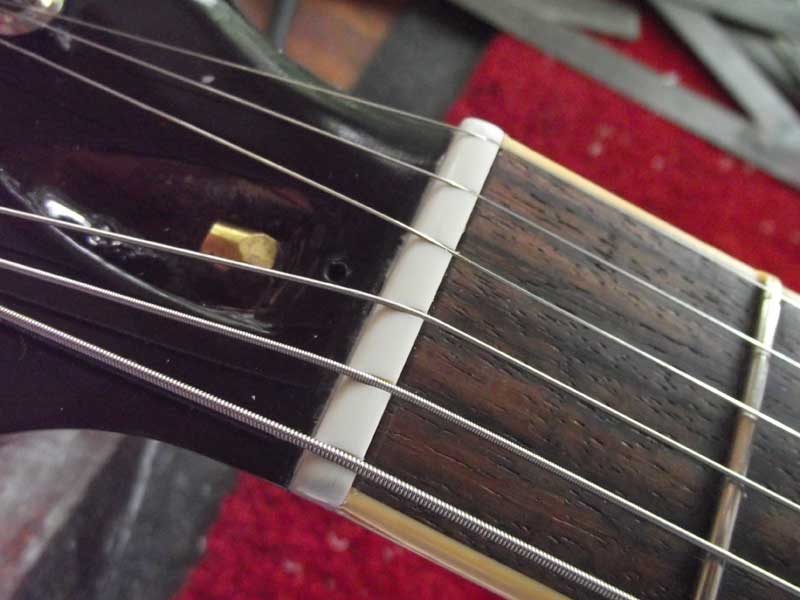
As always with Gibson nuts, I re-lacquered the ends, just like the original for a super-smooth, seamless finish.
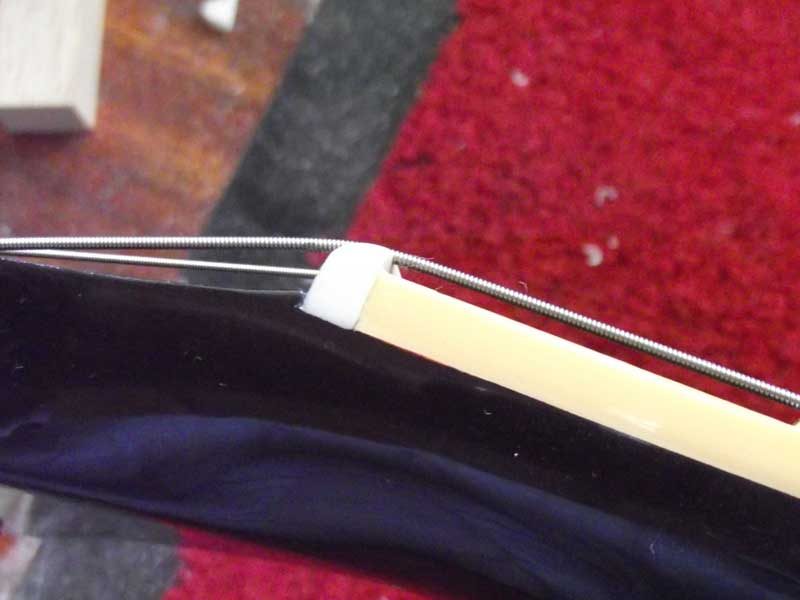

The problem is not exactly corian itself but the fact that Gibson slots their corian nuts with the PLEK machine which should only be used for frets. As a result, their nuts come out of the factory extremely low and angular with the shallowest slots. Most of the times the slots are on the very edge of the nut with is a design flaw as it will wear down super fast and there is not enough material to improve the cut.
I came across some info on Gibson and Corian nuts elsewhere that may or may not be accurate. They have been using Corian as a nut material for quite some time. This is because it sort of resembles bone, it is hard and dense and can be shaped relatively easily. It is cheaper than bone and more consistent. I suspect there may also be health concerns since bone is an organic material sourced from dead cattle.
Anyway, for the sake of efficient production and a consistent product, a few years ago Gibson started using PLEK machines to level frets. They then extended this to using the PLEK machines to cut the nut slots. The cutting head on the PLEK has, I believe, three degrees of freedom, so it cannot easily follow an angle, such as the back angle of the headstock. This means it cannot cut angled slots across a wide nut. So Gibson altered the profile of their nuts, instead of the top of the nut more or less following the angle of the headstock, Gibson started shaping them with a much sharper angle. This meant that the PLEK cutter could just make short shallow cuts across the top of the nut parallel to the fretboard. The strings now barely touch the top of the nut. Now you might think well that’s good – the less contact between the nut and the strings the less friction. Unfortunately that is not how it works, in practice all the down tension from the string is concentrated onto that small contact point. In the case of the wound strings, instead of many turns of wrap wire resting on the nut surface, distributing the load, there are only one or two turns, producing more of a gear wheel against a ratchet effect. If Gibson used bone for their nuts and shaped it the same way, it might prove just as problematic.
Corian itself might be pretty good as a nut material, as long as it is shaped not to produce high pressure, small, contact points with the string and as long as it is polished. This is another thing Gibson do not do. The Corian nuts are smooth finished to a degree, but they are not polished.
To level the slot where there nut goes, what file did you use?
I use a Stewmac nut seating file
I’ve just successfully fixed a slot that was too deep on my LPJ by filling it with super glue and baking powder and refiling. It really does work!
Removing metal from first few frets is about the worst idea I’ve heard, that screws up the intonation big time.
Hi Steve,
Could you please explain your thoughts about corian as nut material? Steaky – you mean that strings would get stuck passing the nut? What about sound(vibration transfer)? Because I just bought some bars in different colors to work with and even made one to replace broken on cheap Ibanez GIO. Was satisfied enough working with the material… I even think Gibson are not the only guys who use it. on that GIO black nut looks made of some bakelite or corian..
Thanks in advise.
Yes, I find that the material Gibson currently use (I think it’s Corian) snags the string, causing tuning problems.
It is easy to work I agree.
As for sound transfer, I don’t think that the nut has all that much impact on the sound of a guitar. If it did, you’d notice a big difference between the sound of open and fretted strings. The important factors are slipperiness (so tuning is easy) and hardness (so that the slots don’t wear down.)
Yes, that’s why I said ‘sometimes’ :) Like for example where some fretwork is going to be needed anyway (like the ‘farmer’s corner’ situation where someone’s been digging around in the first few positions) ! There are also of course quite a few guitars out there that have less than perfect necks/boards/frets even when new, and sometimes with a careful truss rod adjustment it’s possible to ‘kill two birds with one stone’ and have level frets and original nut. Each guitar is different, and whether US or Chinese-built there’s always an interesting challenge :)
I actually did just this yesterday on a Gibson ES-335. The nut was borderline, but a fret dress was needed. I dressed the frets and kept the original nut.
Nice work, but just thinking that sometimes you can take a very light skim off the first few frets and keep the original nut.
Thanks, but I think that replacing the nut is a better solution than removing metal from the frets. And it’s not a good idea to lower the first few frets as you’ll end up frets that are not 100% level.